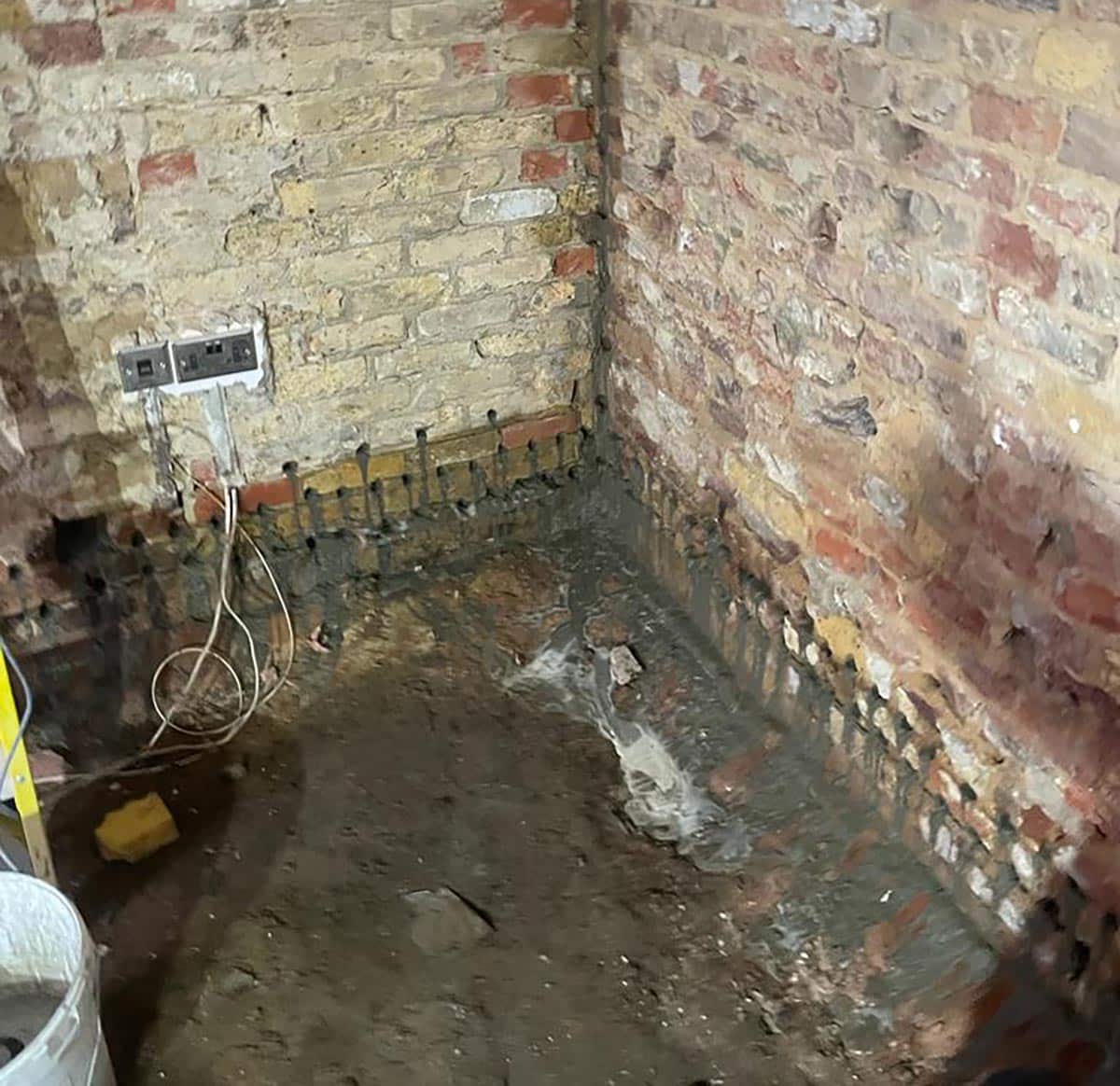Dampness can be a persistent issue in buildings, causing structural damage and health concerns. However, when approached with expertise and the right techniques, damp problems can be effectively resolved. In the case of Sidbury St, London, a comprehensive damp proofing project was undertaken, resulting in a successful transformation from a damp-ridden space to a dry and secure environment.
One of the key aspects of tackling dampness is proper drainage management. At Sidbury St, a new ACO drain was installed to efficiently channel any water away from the building’s foundation. This drain played a crucial role in preventing water accumulation and potential water ingress into the property.
Crystalline DPC Injections:To further fortify the building against rising damp, crystalline DPC (Damp Proof Course) injections were carried out. This process involved injecting a specialized chemical compound into the affected walls, creating a waterproof barrier that impedes the upward movement of moisture. This step effectively prevented the infiltration of dampness and mitigated the risk of damage to the building’s structure.
Internal Waterproof Render with TT55 Tanking Slurry:To ensure a dry and habitable interior space, a new waterproof render was applied internally. The use of TT55 tanking slurry provided an effective barrier against moisture, creating a durable and watertight surface. This internal waterproofing layer not only protected the walls from potential water damage but also provided a smooth and aesthetically pleasing finish.
Silicone Render Application:Addressing the exterior walls affected by dampness required a robust solution. Silicone render, known for its excellent waterproofing properties and breathability, was applied to the external walls. This high-quality render provided a protective shield, preventing water ingress while allowing moisture within the walls to evaporate. The result was an improved appearance of the building’s exterior and increased resistance to damp-related issues.
Reinforced Sub-Concrete Base:To combat ground moisture and prevent its seepage into the building, a reinforced sub-concrete base was poured. This additional layer acted as a barrier, minimizing the risk of moisture intrusion from the ground, and safeguarding the structure against potential damage. The reinforced base provided stability and strength, ensuring a solid foundation for the property.

